Syn.: Carduus horridulus Pers., Carduus pinetorum Small, Carduus spinosissimus Walter, Carduus vittatus Small, Cirsium chrismarii (Klatt) Petr., Cirsium vittatum (Small) Small, Cnicus chrismarii Klatt, Cnicus horridulus (Michx.) Pursh
Family: Asteraceae Bercht. et J. Presl
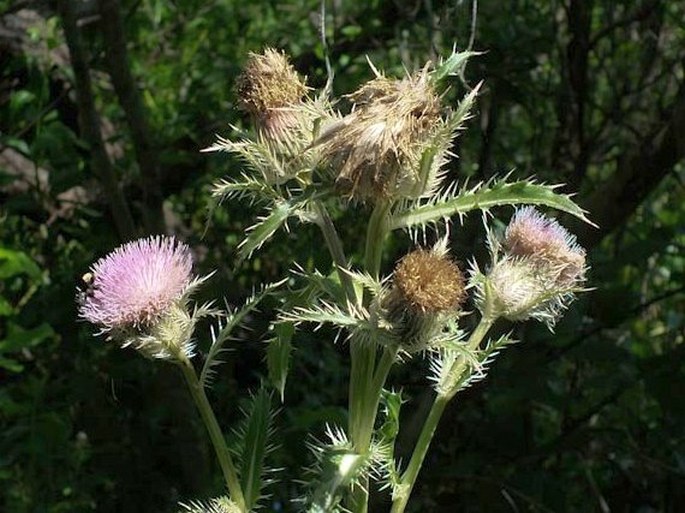
Distribution: North American species found from Maine along the Atlantic coast to Texas and in Oklahoma, Arkansas and Tennessee. Also found in Eastern states of Mexico. In its area 4 varieties are recognized.
Ecology: In wet areas, swamps, open forests, but also in dry areas and on disturbed land. Blooms in the spring.
Description: Biennial, sometimes perennial herb, fleshy, 15–250 cm tall, from stout taproot and fleshy lateral roots to create the perennial growth. 1 to several stems, erect, glabrous to densely tomentose. Leaves oblanceolate to oblong-elliptic, 10–40 × 2–10 cm, unlobed and spiny-dentate to deeply pinnatifid, lobes spiny-dentate or coarsely lobed, main spines stout, 5–30 mm; basal leaves present at flowering, cauline leaves sessile, clasping, lanceolate, more spiney and narrower lanceolate towards the top. Flower heads 1–20 in subcapitate to corymbiform arrays; peduncles 0–5 cm; calyx hemispheric to campanulate, 3–5 × 3–8 cm, bracts in 5–9 rows, light green, lanceolate to linear, top ones with reddish margins; corollas yellow, pink, purple to red, 30–47 mm, tubes 11–30 mm. Fruit is an achene, straw coloured, with pappus 25–35 mm.
Threat and protection: States of New Hampshire, Pennsylvania and Rhode Island list this species as endangered. Many other states list it is a noxious weed and very invasive.
Note: As mentioned in description the flower colour varies greatly, sometimes within populations and sometimes on a populational or regional basis.
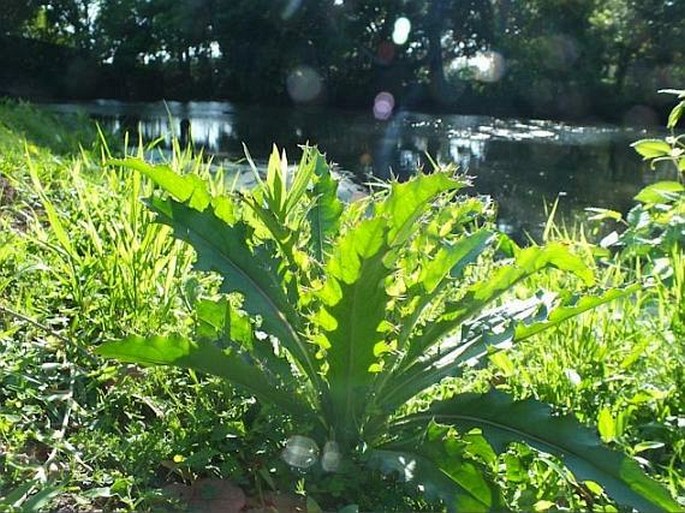

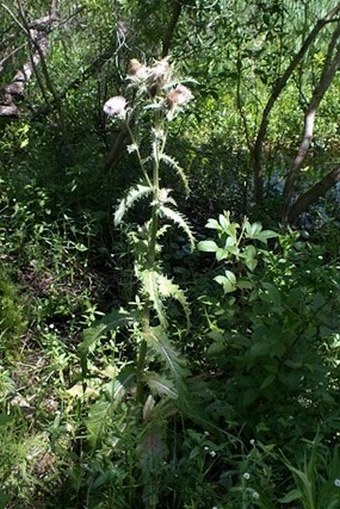
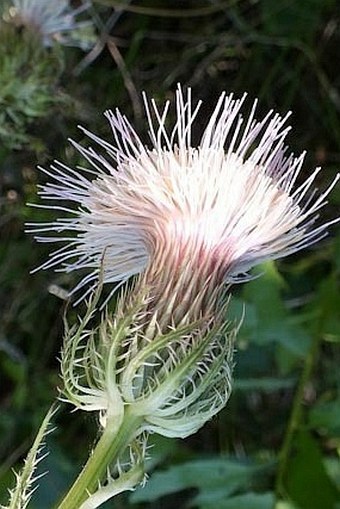
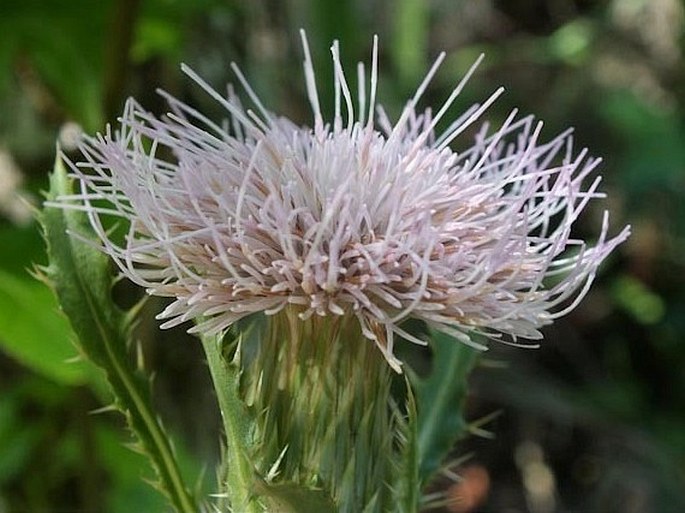

These images were taken in USA, Louisiana, Jean Laffite National Park (May 2014).


